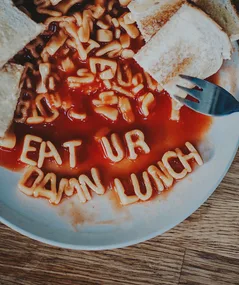By Becky Searles, Family Garden Life
If you want to turn a house into a home then a garden is going to be your best move. And if you want to really improve the value of your home, it’s a productive garden where you can harvest nutrient-dense food that’s going to make the biggest impact.
When you think about a family’s basic needs, food and shelter at at the top of the list, and if your food garden is operating well, it can provide a family with food for most of the year.
Even better, if your family adopts organic gardening principles, you’ll have home-grown organic food that will leave money in your back pocket.
Some advantages to growing your own organic food include:
Saving serious money
Your family will enjoy freshly harvested food
Reducing your family’s carbon footprint
Your food will be packed full of nutrients
Your harvest will be free of the baddies like synthetic fertilisers, pesticides and chemicals
You’ll be helping the environment on so many levels
Mindfulness, connecting with nature and family at the same time

An organic garden is a great investment for your home and your family’s health.
(Credit: Supplied)You don’t have to have a massive space or a degree in horticulture to grow organic food, you just need to learn the basic principles to keep your food garden clean, productive and enjoyable. From your first harvest, the rewards are so much more than the food you bring into your home.
Here’s three valuable steps to get you started …
Step 1 – the set-up
The location is extremely important. Your food garden needs 6-8 hours of sun a day for your food garden to thrive. Watch the sun, locate the best spot and map out your space.
You need to make sure your soil is rockin’ the good stuff. Organic soil, needs to be rich in nutrients so your plants have a great start to life. Water and mulch are also part of the big picture. They work together to keep your plants hydrated and regulate the soil temperature.
WATCH: Foods to eat to boost fertility. Continues after video …
Step 2 – the operation
Selecting the right plants for your climate each season is vital to your success. Organic gardening techniques are broad in their concept but very easy to apply in your food garden, and I highly recommend using them to keep your garden clean.
Some techniques include; making your own organic matter and fertilisers, companion planting, using plants to help with organic pest control and adopting techniques to harness the synergies from Mother Nature.

Planting the right foods at the right time will yield you delicious results all year round.
(Credit: Supplied)Step 3 – harvesting and your garden kitchen
There is nothing better than knowing what you’re going to enjoy with your harvest, like beetroot relish or pumpkin soup. Harvesting, storing, cooking and enjoying together as a family is when you start to see the enormous value in a productive organic food garden.
Creating a space in a garden which offers a source of food to a home will more than improve the home’s value and save on your grocery bill. It can also bring a family together and improve overall well-being but most importantly, you’ll be teaching kids where real food comes from and how to live sustainability in our modern world.
Rebecca Searles from Family Garden Life is an expert at getting your family outdoors with fun ideas and projects, all while saving you money on your food grocery bill.
.png?fit=900%2C751)

